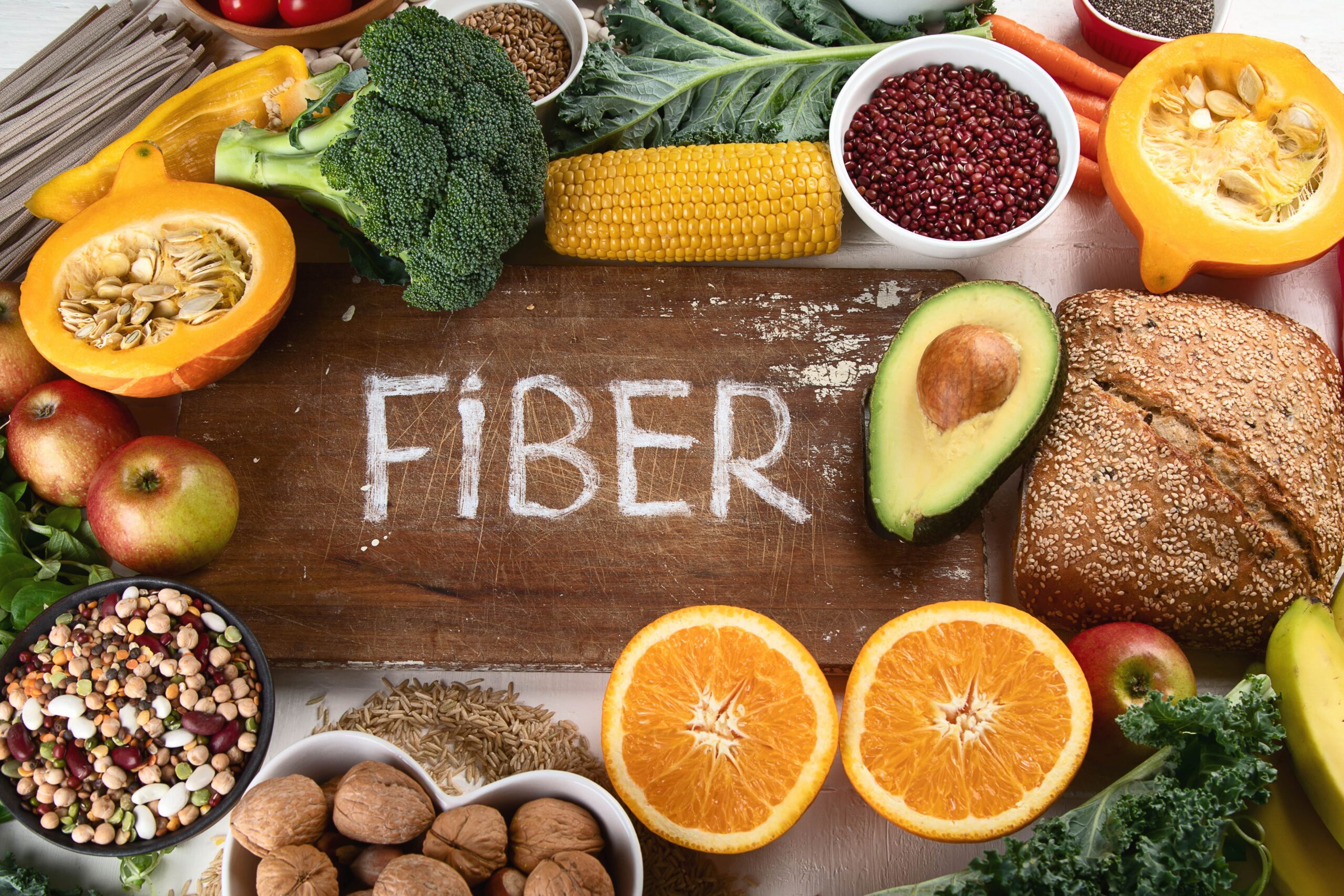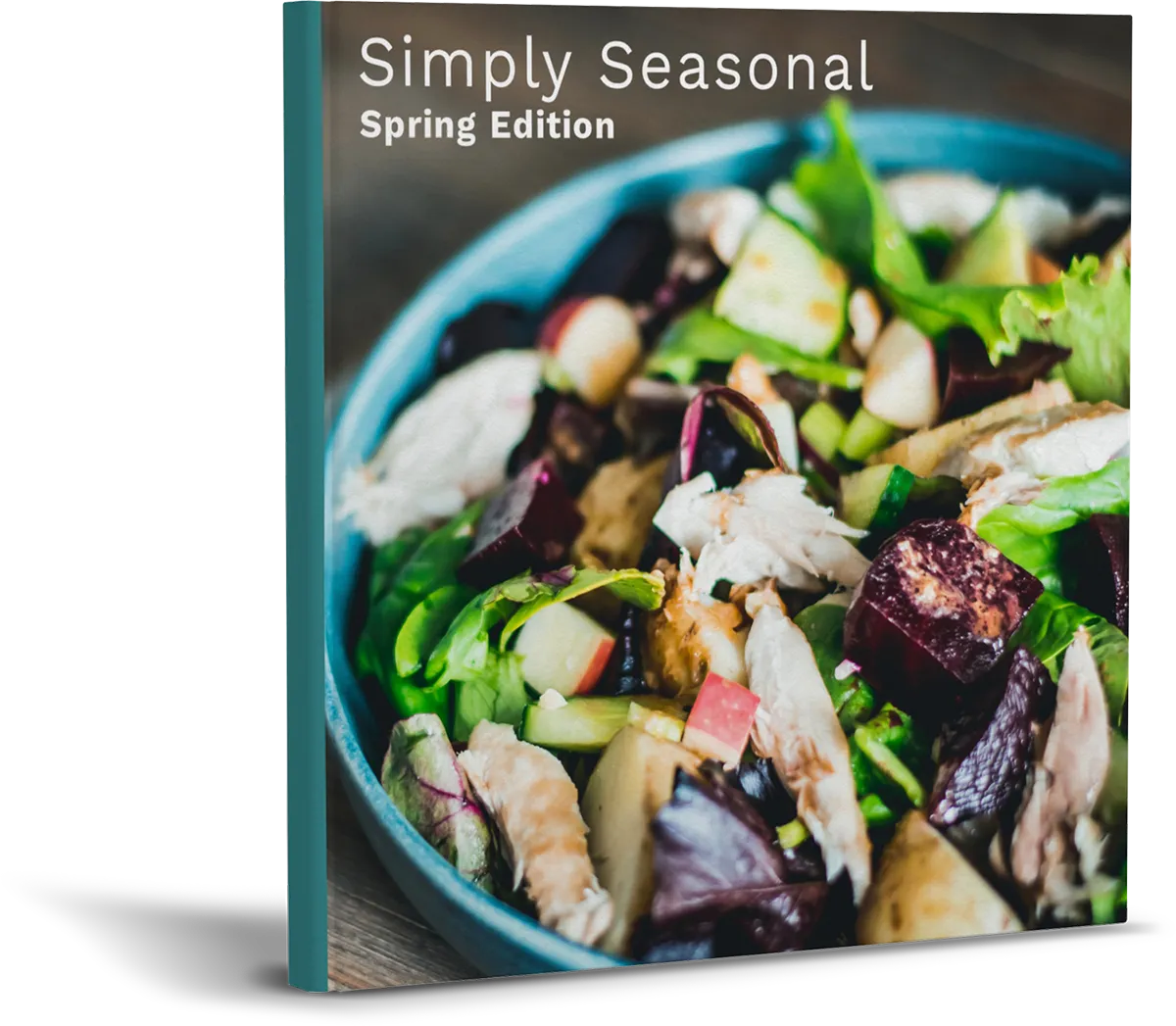Eating foods that are naturally rich in fibre are a corner stone of any successful weight loss journey! This article covers some of the many benefits of fibre, examples of high fibre foods, some tasty meal ideas, as well as eight top tips for optimising fibre intake on your weight loss journey.
Benefits of fibre for weight loss
Greater weight loss: studies show that consuming a high fibre diet may result in greater weight loss (Miketinas et al. 2019).
Helps you feel full for longer: fibre promotes feelings of fullness and satiation (Poutanen et al. 2017). Staying full until your next planned meal is critical for being able to stick to your prescribed caloric intake without struggling!
Better dietary adherence: being successful on your weight loss centres relies on you being able to consistently stick to your diet in the long term. Higher fibre diets are associated with better dietary adherence (Miketinas et al. 2019).
Decreased energy intake: because a high fibre diet helps you feel full for longer, it is associated with a reduction in energy intake, critical for reaching those weight loss goals (Rebello et al. 2016).
Helps keep your gut healthy: fibre is important food for healthy gut bugs in your stomach. More research is indicating the importance of gut health in maintaining a healthy weight, so set yourself up for success by nurturing your gut health. Forget probiotic supplements, prebiotics naturally found in plant-based foods is the best way to positively influence your gut microbiome.
Promotes healthy weight loss: dietary fibre may be associated with numerous health benefits – reduced risk of early death, heart disease and pancreatic cancer (Veronese et al. 2018).
Helpful for keeping you regular: being bloated and constipated is not what you want on your weight loss journey. Regular intake of enough fibre will generally assist regular bowel movements. In some cases, higher fibre can lead to an increase in bowel symptoms and contribute to IBS.
How much fibre should I have?
For general health benefits, in the UK, adults are recommended to get 30g of dietary fibre per day. However, this amount needs to be adapted according to your health status and tolerance level. For example, if too much fibre causes you bloating, diarrhoea and gas, then adapt your fibre intake to suit you.
Can you have too much fibre?
Yes! As mentioned above too much fibre may be detrimental to gut health. Additionally, if you suffer from irritable bowel syndrome (IBS), it will be important to be mindful of the types of fibre and how much you eat to ensure that it does not aggravate your IBS. Insoluble fibre acts like a bulking agent and does not mix well with water in the digestive tract, whereas soluble fibre is a fibre that forms a gel like substance by mixing well with water.
Being mindful about increasing your fibre intake gradually is also recommended, to build tolerance levels and determine what intake is optimal for you.
If you do have ongoing digestive symptoms and have been labels with IBS you may want to work with one of our digestive health specialists to help address this while also achieving your weight loss goal.
What fibre to choose?
Fruits and vegetables, nuts and seeds, beans and legumes and whole grains (oats, rice) are all great sources of fibre to include in your diet. Including a range and a balance of different sources may be optimal for your gut health. Whilst on your weight loss journey choose fibre from non-starchy vegetables, such as cauliflower, courgette, spinach, and low-sugar fruits such as raspberries and blueberries, more freely and be more intentional about fibre intake from starchy carbohydrate sources such as beans, legumes and whole grains.
Examples of fibre
Non-starchy vegetables: include these more freely on your weight loss journey
- Runner beans
- Broccoli
- Cauliflower
- Cabbage
- Kale
- Sprouts
- Bok choy
- Radicchio
- Bean sprouts
- Green beans
- Tomatoes
- Peppers
- Cucumber
- Courgette
- Bamboo shoots
- Green leafy veg
- Asparagus
- Celery
- Fennel
- Mushrooms
- Mangetout
- Artichokes
Starchy sources fibre: be mindful of portion sizes to ensure you meet your calorie deficit and carbohydrate goal.
- Quinoa
- Buckwheat
- Rice
- Oats
- Millet
- Amaranth
- All beans
- All lentil
- Chickpeas
- All root vegetables
- All fruits
Other sources of fibre: be mindful of portion sizes to ensure you meet your calorie deficit and manage your fat goal.
- Nuts
- Seeds
8 top tips for optimising fibre intake for your weight loss journey:
1. Include at least 2 non-starchy vegetable at each meal.
For example spinach and tomatoes for breakfast, courgette and asparagus for lunch and broccoli and runner beans for dinner. Rotate your veg to get a range of micronutrients for optimal health and energy, whilst feeling full and satisfied.
2. Increase fibre in a graduated manner
If you go from zero fibre to 30g in one sitting, your gut is likely to struggle. Take it slowly and introduce a small serving at one meal and see how your body handles it – after a few days, consider introducing another serving.
3. Swap any white bread, pasta, flours to wholegrain/wholemeal options
To increase fibre intake and reduce sugar intake – so a double whammy for your weight loss goals! We often recommend pea and lentil pasta as a swap for normal grain-based pasta. It has significantly more fibre, twice the amount of protein and half the amount of carbohydrates making it extremely filling.
4. Choose low-sugar berries for a sweet treat
A handful of raspberries or blueberries, with a dollop of plain yoghurt, is a fibre rich nutrient dense, filling, and tasty snack/pudding. It’s super important to eat delicious food on your weight loss journey!
5. Embrace fibre but don’t go overboard
Whilst fibre is an integral part of your healthy weight loss journey, avoid going overboard with it to mitigate risks of feeling bloated and having excessive gas.
6. Keep a supply of frozen veg
Great for batch cooking, to avoid ever being without veg and save money!
7. Keep your fibre intake consistent
This is helpful for your gut and bowel movement and getting in touch with levels of fullness. It is also helps avoid contributing to significant fluctuations in weight – this is important when weighing yourself regularly.
8. Fibre has calories but it’s minimal and very little is absorbed
Fibre generally contains anywhere from 0 to 2 contributing calories per gram depending on if it is soluble or insoluble. The limited number of calories within fibre mean you can track calories from fibre, however, it is unlikely to impact to any significant degree on your overall calorie intake.
Key takeaways:
Fibre is an important part of making every meal filling: and plays an integral role in successful weight loss and maintenance.
Fibre has many health promoting benefits: including gut and heart health, blood sugar management and cancer prevention.
Choose at least 2 sources of non-starchy veg at every meal: such as kale, cauliflower and mushrooms. Including these nutrient dense vegetables that are rich in fibre, will help you to feel full and make your weight loss journey healthy. Consider including other sources of fibre in your diet too – mindfully select portions of starchy sources and nuts that fit with you macronutrient ratios within your personalised nutrition plan and facilitate you staying within your calorie deficit.
Work with a weight loss specialist
Our clinicians specialise in weight loss. All qualified nutrition professionals have backgrounds in the exercise industries and a vast amount of experience coaching clients towards their goals.
Check out our weight loss specialist page, where you can learn more about our services, clinicians and the support and programs that we offer.
If you would like to enquire to work with one of our practitioners, please click the button below:
References
- Miketinas et al. (2019). Fiber intake predicts weight loss and dietary adherence in adults consuming calorie restricted diets: the POUNDS lost (Preventing Overweight Using Novel Dietary Strategies) study.
- Poutanen et al. (2017). A review of the characteristics of dietary fibers relevant to appetite and energy intake outcomes in human intervention trials.
- Rebello et al. (2016). Instant oatmeal, improves satiety and suppresses energy intake in subsequent meals.
- Veronese et al. (2018). Dietary fibre and health outcomes: an umbrella review of systematic reviews and meta-analyses.


